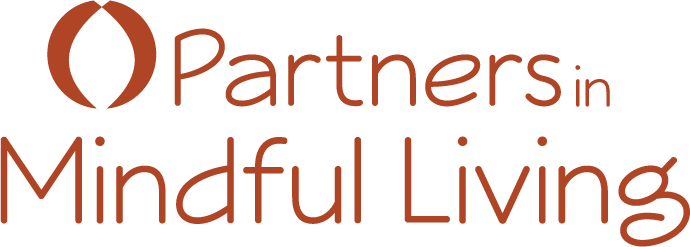
First, accept that you’re human.
January 29, 2023
Were you raised with the idea that perfection is possible?
Did they tell you that if you work hard enough — are nice, generous, loving, grateful, and joyous enough — there will be a juicy reward, either in heaven or in creating the life of your dreams right here on planet earth?
When you were angry, sad, jealous, or greedy (remember slyly taking the biggest piece of cake?), were you told that you were selfish and no one would want to be friends with you? And then told how you ‘should’ feel?
If those were your experiences, you likely got better at stuffing, hiding, or repressing the ‘bad’ thoughts and feelings, because the idea of no one ever loving you was unbearable. And then you worked harder to be even more perfect.
It’s exhausting pretending to be somebody you’re not.
There are three critical steps to making friends with all the parts of yourself, especially the ones they said were unacceptable:
- Accept your humanness.
- Identify the rejected parts of yourself.
- Define your values and let them guide you.
Accept your humanness.
Stop pretending you are other than who you are.
When a client comes to me and says, “I know I’m too kind,” I have the thought that it’s not possible to be too kind. It is possible to be a doormat. It’s also possible that if we believe we are too kind, we don’t notice when we aren’t.
Challenge the idea that you will someday ‘arrive.’
Sainthood is highly overrated. We know from her journal that Mother Teresa struggled with depression, and Gandhi got angry and sometimes lashed out as his support system. Likewise, the Dalai Lama, who seems like the most peaceful guy on the planet, admits to being angry sometimes.
The goal is not to ‘arrive.’ Instead, it is to embody all your humanness. And the only way to do that is to see it all — the good, the bad, and the neutral.
It’s okay, we all have a shadow side.
Carl Jung, the Swiss psychiatrist who coined the term shadow side, believed that we all have parts of ourselves we tend to reject or repress. And more importantly, he thought that most of us are blind to the existence of our shadow side, so we have a false sense of moral superiority.
Jung woke me up to the reality that feeling envious, judgmental, or cranky is not subhuman! My job wasn’t to become perfect but to become whole.
Uncover the rejected parts of yourself.
Although Jung’s theory made sense to me, I struggled with how to find those parts hidden in my subconscious.
And then, I read something by my favorite Buddhist teacher and writer, Pema Chodron, and another puzzle piece fell into place.
She laid out a simple formula to uncover the rejected parts. She said:
“If you were to come up with one word describing each of the obnoxious troublemakers in your life, you would find a list of your own rejected qualities.”
The tool Pema offered was simple. Using it was not.
It’s not easy to acknowledge that the people we’ve held in contempt are windows into ourselves.
Try this exercise:
Write down what repulses you about your neighbors, family, and friends:
- Cussing?
- Arrogance?
- Whining?
- Victimhood?
- Know-it-all-ness?
- Irresponsibility?
- Self-righteousness?
- Laziness?
Initially, the idea that we all, to one degree or another, embody all those qualities can be deeply unsettling. Who wants to own characteristics that in others make us grate our teeth and bite our tongues?
My Achilles heel is people who are arrogant know-it-alls. And I bet you already guessed where this is going. Yes! I can be an arrogant know-it-all!
I’m not proud of it. But here’s the thing–I’m simply human. And seeing the tendencies in myself that get me farther from who I want to be, allows me to choose whether or not to act on what I’m thinking or feeling.
Pema gave me the tool of choice.
Define and clarify your values.
Now that you know projecting your shadow side onto other people isn’t serving you, what do you do instead?
The trick is to pay less attention to your random thoughts and feelings and more attention to clarifying and defining your values. Because they are a guide that will never let you down.
Values are not goals.
You don’t achieve a value like you can achieve a goal. Climbing to the top of a mountain is a goal. You set a target, reach it, or not.
On the other hand, values are characteristics you want to embody and express daily. For example, the value underlying that mountain climb might be living an adventurous life.
See the difference?
Values are guides when the world around you is spinning off its axis, and your thoughts and feelings are scaring the crap out of you.
Take your time defining your values.
Picture your wake. You are floating above your family and friends, listening to what they say about you. What do you want people to remember you for? What characteristics will you regret not having developed more fully?
Identify ten fundamental values like honesty, family, responsibility, humor, etc. And then flesh them out — write two or three sentences that show precisely how you’d behave if you lived in line with that value.
How would you handle yourself? What might be different than how you’ve behaved in the past? How would you feel about yourself?
No worries–a value doesn’t have to be something you’re already good at. I’ve been playing with these ideas for years, and I’m still working on being more consistent with all my values.
Again, there is no arrival.
Allow your values to guide you.
But never again do you have to be at the mercy of your random thoughts and feelings.
When you are in a sh*t storm of thoughts and feelings, stop and ask yourself this question: regardless of what I’m thinking or feeling, what value do I want to guide my behavior in this situation?
For example, when my son was a young teenager, shouting at me for not getting his way, I clung to the value that I wanted to be a great parent. So instead of yelling back, I said, “You may be right, I may be a terrible mother, and I’m sorry this is hard.”
That wasn’t the first random thought I had, believe me. But once again, being clear about my values saved me from doing or saying something I knew I’d regret.
When you learn to treat all the parts of yourself with the tender loving care you’d give a five-year-old having a temper tantrum, you will see yourself through the same eyes you see that child. You’ll see a young, struggling human who couldn’t have what they wanted. That’s all.
Wrapping it up:
- Acknowledge that you are human and will not achieve perfection.
- Use your reactions to others as a self-discovery tool, rather than a baseball bat that beats you down or makes you feel small.
- Define and clarify your values, and use them as guides in your day-to-day decisions.
When you get the courage to look at the stuff you’ve kept hidden, you have two choices: push it back down or look it in the eye and give it the respect it deserves.
Noticing the parts of ourselves we find repulsive in others is like being afraid of spiders and walking up to one without running away or screaming. It starts as a ghastly experiment, but as any arachnologist will tell you, spiders are fascinating.
The moment you understand that your reaction to someone else is information about you is when you can relax. You no longer have to pretend you’re someone you’re not.
You can offer understanding, tenderness, and compassion to yourself, just like you would to that five-year-old who didn’t get what they wanted. That child wasn’t bad, and neither are you. You’re both just human.
Much love,
